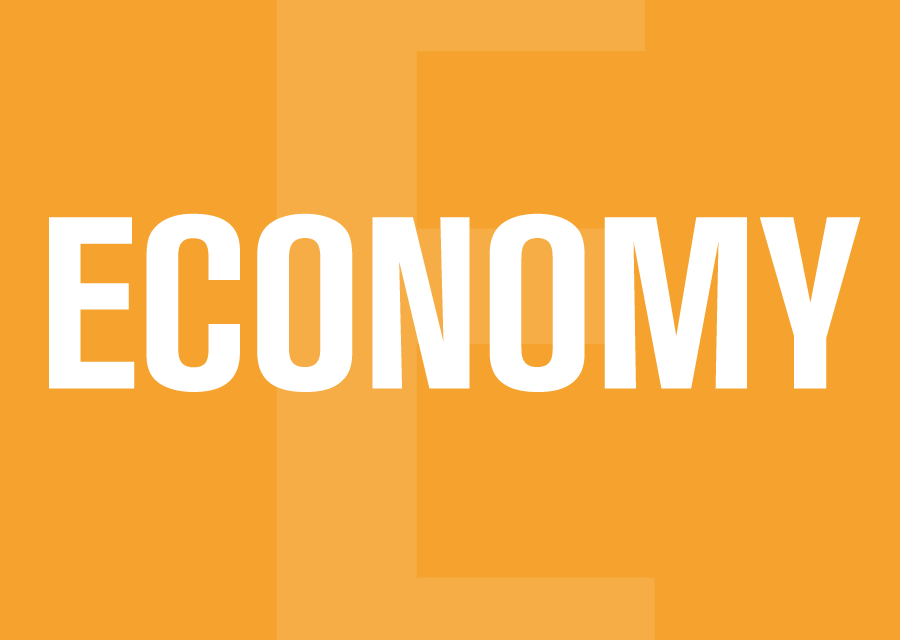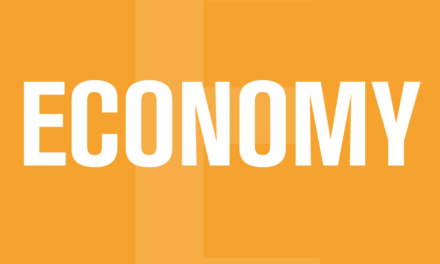John Quiggins’ 2010 book, Zombie Economics: How Dead Ideas Still Walk Among Us describes how neoliberal economic ideas that should died with the Great Recession of 2007-8 continue to live on. Readers of the Chronicle-Herald and the National Post have recently been exposed to something similar: zombie fiscal federalism, an ungenerous view of the country from the distant past that should have stayed buried.
The outbreak of zombie fiscal federalism made the opinion section of the Herald on April 24. A full-page article by David MacKinnon, with the headline, “Economic Reality Will Wreck our East Coast sand castle” reported “in recent years, the net transfer to each Atlantic Canadian from the pockets of other Canadians has been $6,400, or approximately $25,000 for a family of four.”
The piece goes on to describe transfers as “extraordinary subsidies” coming largely from taxpayers in Alberta and Ontario, provinces facing their own economic challenges. “Even the federal government – so far blind to the scale of the problem – may have to recognize this.” MacKinnon proceeds to list the many sins he attributes to the “massive and carelessly designed and delivered subsidies,” including “wildly excessive provincial public sectors” in each Atlantic province, too many universities in Nova Scotia and better access to public services than enjoyed by Ontarians.
Although perhaps new to Chronicle-Herald readers, David MacKinnon has been playing a version of the subsidy song for years. The fact he is a native of Prince Edward Island and worked for some unspecified period in the distant past for the Nova Scotia government seems to afford him standing as a critic of the Atlantic region that he may not have if identified as an Ontario retiree with links to the Ontario Chamber of Commerce.
And the fact that the broadside from the ex-Maritimer appeared in the Herald, the region’s erstwhile tribune, provided fuel for National Post columnist Diane Francis, who dragged the discussion into the political gutter. The gist of her column was captured in the headline – “With more seats than it deserves Atlantic Canada is awash in federal handouts.” The materfamilias of snarky commentary accused the Trudeau Liberals of shoring up electoral support with grants and equalization payments to Liberal strongholds, a claim to be examined in Part Two.
Readers responded
MacKinnon’s assault on the Atlantic region generated an aggrieved letters-page response from Herald readers, with the longest and strongest coming from Jamie Baillie, former leader of the provincial Tories. Baillie saw it mostly as an attack on equalization. He defended the idea of equalization and even questioned whether it was achieving its goal of ensuring reasonably comparable services at reasonably comparable rates of taxation.
Other correspondents noted federal subsidies that benefit other provinces, such as those to the Ontario auto industry or for icebreakers on the St. Lawrence River. Also mentioned was the brain drain, which sends so many of our young people to other provinces where they work and pay taxes.But only one letter, from Max Stanfield in Mahone Bay, nailed what McKinnon is really arguing: the level of federal government services in different regions of the country should be determined by the revenue generated within a region.
MacKinnon’s zombie fiscal federalism is based on the notion that every cent the federal government spends in a province or region in excess of what it collects in revenue from that province or region is a “net transfer” or subsidy to the province or region.
In effect, MacKinnon is not just questioning the oft-debated equalization transfers to provincial governments. In attacking “net transfers” he is suggesting that individual residents of low revenue regions should receive less from the federal government in transfers such as pensions or child benefits. Or perhaps he favors differential tax rates with Canadians in less-wealthy regions paying a higher federal rate as a way to reduce the amount of the $6,400 net transfer – as if paying higher provincial rates isn’t already enough.
A long history
Most economists don’t use the term subsidy or net transfer, referring instead to the “federal fiscal balance” for a province or region. A positive balance means the feds are collecting more revenue in a region than they are spending there, while a negative balance indicates the opposite – more spending than revenue collected.
Positive and negative balances have existed since Confederation. Wealthier provinces with stronger tax bases produced positive balances and have frequently strived to reduce the size of that positive balance by limiting the taxing and spending power of the federal government. Ontario, as the country’s original rich kid, has a long history of doing just that. It started with Premier Oliver Mowat in the 1870s and continued up through the post-World War II Reconstruction Conference where, over the Ontario Premier’s objections, the framework for the fiscal arrangements MacKinnon complains about were created.
In the mid-1990s another zombie eruption prompted John Savage to decry what he saw as Ontario’s desire to “get 100 cents back for every dollar it puts into the kitty.” That criticism did not deter the Dalton McGuinty government from re-naming Ontario’s positive federal fiscal balance “The Gap” and carrying on a decade-long campaign against prevailing fiscal arrangements. Ironically, the Harper Conservatives found themselves in defense of the status quo against Ontario’s attacks. But when governments changed in Ottawa, Toronto and Edmonton, Jason Kenney’s Alberta government picked up the torch from the Ontario Liberals.
Just as the debate over federal fiscal balance goes back many years, so too does the ability to measure balances over time. David MacKinnon bases his screed on a report that came out in January from the Atlantic Institute for Market Studies (AIMS) and the Fraser Institute. Entitled Fiscal Federalism and the Dependency of Atlantic Canada, it is authored by Fred McMahon, another veteran zombie conjurer. His 1996 book on federal transfers, Looking the Gift horse in the Mouth: the impact of Federal Transfers in Atlantic Canada was sufficiently offside to cause three academic economists to write a response aptly entitled Should Our Concern be the Gift Horse or the Ideological Bull?
Nothing new here
The data for McMahon’s January, 2021 report for AIMS comes from Statistics Canada’s Table 36-10-0420-01, “Revenue, expenditure and budgetary balance.” Calculations based on that data are the source of the $6,400 net transfer figure.
In the Herald, MacKinnon writes that “most Atlantic Canadians would be surprised” by the $6,400 number. That’s possibly true because most Atlantic Canadians would be unfamiliar with the arcane details of government spending contained in the annual StatsCan release. However, anyone who has been following the pattern of federal fiscal balances will find nothing remarkable in the latest figures.
In fact, some of the calculations presented in Fred McMahon’s 50-page report show that if there’s anything new to report it is that negative federal fiscal balances have been going down in the Atlantic Region. The per capita net transfer figure for 2019, while up from the previous year, was lower than it was between 2009 and 2011. And the dependence of the Atlantic economy on federal spending has declined significantly over the years.
- Between 1997 and 2009, according to figures in McMahon’s report, total federal spending on average amounted to 31.2 per cent of the Atlantic economy while the net transfer – the subsidy – was 15.4 per cent.
- Between 2007 and 2019, total federal spending dropped to 27.5 per cent of the Atlantic economy and the difference between federal revenues and federal spending in the region – the “subsidy”- fell to 12.8 per cent of GDP.
A June 2020 paper from the School of Public Policy at the University of Calgary documents fiscal balances back to 1961 and further undermines the significance of the latest McMahon-MacKinnon zombie apocalypse. The Calgary research shows that after peaking in the 1980s, Atlantic Region’s negative balance – aka net transfer – has been going down. And that has been accompanied by a significant decline in each province’s dependence on those transfers.
Table 1 shows the amount of fiscal balances, adjusted for inflation, for each decade while Table 2 shows the share of provincial GDP dependent on those balances.
Table 1:Fiscal balance ($billions 2018) by decade (1980-2018)
| 1980-9 | 1990-9 | 2000-9 | 2010-8 | |
| NL | -48.3 | -46.7 | -31.7 | -14.8 |
| PEI | -10.1 | – 9.3 | – 9.8 | -11.4 |
| NS | -72.1 | -58.8 | -55.7 | -63.5 |
| NB | -48.9 | -39.6 | -37.3 | -44.4 |
| Total | -179.4 | -154.4 | -134.5 | -134.1 |
Source: School of Public
Table 2:Negative balance as % of GDP by decade (1980-2018)
| 1980-9 | 1990-9 | 2000-9 | 2010-8 | |
| NL | -34% | -29% | -12% | -5% |
| PEI | -32% | -23% | -19% | -20% |
| NS | -29% | -20% | -14% | -17% |
| NB | -25% | -16% | -12% | -14% |
Source: School of Public Policy
As the tables show, the downward trend in negative balance and the size of the balance relative to provincial economies dropped sharply from 1980 to 2009 before plateauing in Table I and increasing slightly in Table 2. That latter increase is the result of increased federal deficit spending after 2015 that affected balances in all provinces. The upcoming Part Two will deal with that, as well as the impact of pandemic spending on federal fiscal balances for 2020.
In the meantime, let us re-visit Max Stanfield’s letter to the editor in which he asks several important questions in response to the MacKinnon piece.
Does be believe other federal or less decentralized countries operate differently than Canada, that richer regions don’t contribute more than poorer ones towards the provision of public goods?
Does he suppose there isn’t a substantial net transfer of wealth from the south of England to the north and other poorer areas of the country? Perhaps he thinks that in Germany, which has a federal system not unlike Canada’s, the provision of services, and hence the transfer of ‘taxpayers’ money’ throughout the country is less generous than in France with its highly centralized government?
Leaving aside the ‘complicated’ question of equalization, its place in the Constitution and Canadian history, etc., what are Mr. MacKinnon, the Atlantic Institute of Market Studies and the Fraser Institute suggesting? A much more fragmented and unequal Canada?
An unequal Canada certainly appears to be what they are suggesting. Otherwise, why would they keep hammering away on “subsidies” when the evidence shows that even if you believe negative federal fiscal balances are a problem, the problem is significantly less than it has been in the past? The question of why, in John Quiggans’ phrase “ these dead ideas continue to walk among us” can be answered by looking at the neoliberal think tanks and their sponsors who nurture the zombie ideas. There’s always a market for arguments against sharing wealth among those who have a lot of it.
-30-








Hi Richard.
You save us again from the neo-liberal cudgel of selected stats. I met a guy some years ago (Albertan) who referred to transfer payments (sneeringly) as “welfare.” I didn’t pop him in the nose but neither did I ever speak to him again. (Don’t think he cares, or even knows.) Have none of these people ever read Lenin on Uneven and Combined Development? Jeez.
I particularly liked and thought effective your reference to other countries at the end. I presume people like McKinnon likely take the US as their model (and we can see how well that’s worked out) but I remember an Ideas program years ago that said that New Mexico and Mississippi are the greatest beneficiaries of Federal largesse, taking in (don’t quote me) U$2.11 for each dollar taxed. So even in the heart of heartless capitalism… (And yet they ALWAYS vote Republican!)
Equalization payments are utterly — utterly, I say — essential for Canadian unity. Plus, every Canadian deserves a common level of services. I thought that went without saying — so naive.
The rich are always selfish. Thank heavens we poor outnumber them. No, wait… is that a good thing?
Good article Richard. I think that transfers should strike a balance between (1) not discouraging too much economic adjustment by being too generous; and (2) not encouraging too much fiscal migration by not being generous enough. Unless one believes that the threat of being deprived of a basic common level of public services is necessary for economic adjustment, it should be possible to achieve both (1) and (2) with (3) a high and level playing field.